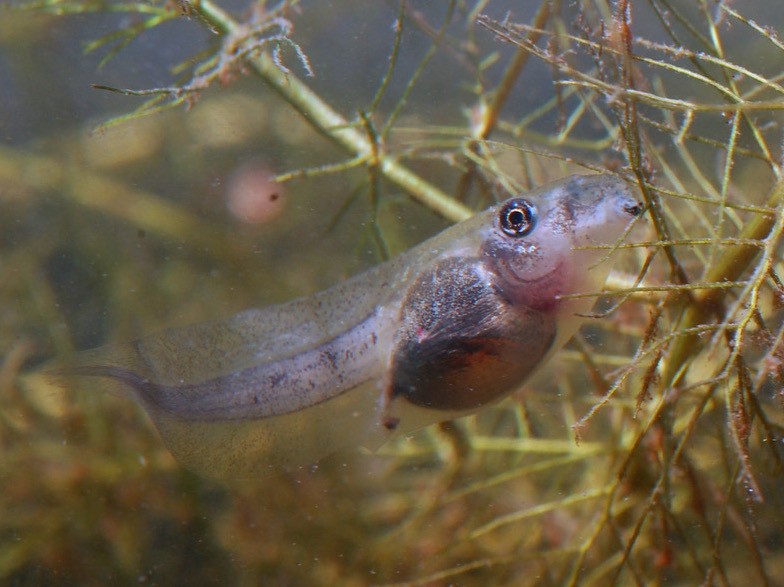A study led by the Doñana Biological Station – CSIC shows for the first time that the ability of organisms to alter their behaviour, morphology, and life strategy in response to environmental changes carries physiological costs related to oxidative stress. The study was carried out with spadefoot toad larvae (Pelobates cultripes) collected in Doñana (Huelva) and Sierra Norte (Seville) in the Southwest of Spain.
The ability of animals and plants to respond to environmental changes is extremely common and the most effective strategy to survive. For instance, amphibian larvae can alter their behavior and morphology to increase their survival probability in the presence of predators. At the risk of predation, they modify their anatomy producing longer tails, reduce their growth rate and increase the activity of their antioxidant enzymes. This is known as "phenotypical plasticity", which allows organisms to adjust their characteristics to different environments.
In this study, the scientists have shown that only maintaining this adaptation potential, even if the changes do not finally come to fruition because there is no interaction with predators, is associated with higher physiological costs, expressed as oxidative stress. "This means that organisms pay a metabolic toll just for maintaining the possibility to change in response to environmental challenges, even if they end up not including such changes", clarifies Ivan Gomez-Mestre, a researcher at the Doñana Biological Station – CSIC. Higher levels of oxidative stress may translate into a poorer body condition, reduced fertility, and shorter lifespan.
Most of the changes observed in organisms due to global change, such as the alterations in the flowering or migration calendar, are plastic responses, which refer to changes of their characteristics in response to environmental inputs. However, this ability has limits. "The physiological costs that we have detected could partly explain why organisms have a limited ability to alter their characteristics to face environmental changes", explains Pablo Burraco, a researcher at the University of Glasgow (Scotland).
From now on, evolutionary studies should consider physiological costs associated with different responses to environmental changes. These costs could limit the plasticity potential of organisms and, therefore, the ability of species to respond to global change.
Reference:
Pablo Burraco, Miguel A. Rendón, Carmen Díaz-Paniagua, Ivan Gomez-Mestre. Maintenance of phenotypic plasticity is linked to oxidative stress in spadefoot toad larvae. Oikos. https://doi.org/10.1111/oik.09078
Contact:
https://doi.org/10.1111/oik.09078









 ¡Abierta convocatoria para proyectos de investigación en la ICTS- Doñana!
¡Abierta convocatoria para proyectos de investigación en la ICTS- Doñana!


